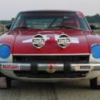1970 240z brakes will not bleed
I have a 70 240z and the brakes have always been soft from when I originally restored the car. I finally decided to upgrade and fix the issue. I just put on the new Toyota front calipers but I still have the drums on the rear. I have pulled a gallon of brake fluid through the lines but I still get air bubbles out of the rear wheel cyclinders and the pedal remains as soft as ever. Here is what I have replaced
1.) New 1" MC from Datsun Parts - figured the 30% extra fluid would fix it. Nope
2.) New vacuum booster from O'riely's - checked the old vacuum boost for reaction disk- fixed that - it didn't help and so I bought a new one - no help
3.) Took off and cleaned the proportioning valve
4.) Hooked up my air compressor to the brake lines trying for force fluid out (somewhere - anywhere) and find what I assume is an air leak - no help
5.) Found a leaking rear wheel cyclinder, fixed that, no leak now but still get air out of the rear
6.) I have bleed the MC multiple times, gravity feed, vacuum pulled, and even done the old two man method and I can't get these things to firm up?
Any advice??




10 Comments
Recommended Comments
Create an account or sign in to comment
You need to be a member in order to leave a comment
Create an account
Sign up for a new account in our community. It's easy!
Register a new accountSign in
Already have an account? Sign in here.
Sign In Now